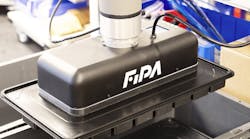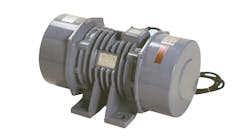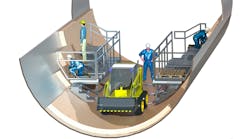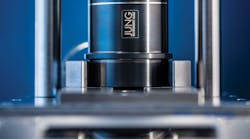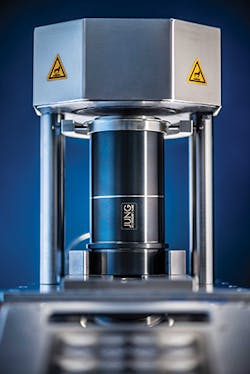JUNG INSTRUMENTS’ new WJ1 tester automatically measures the wet tensile strength of molding sands and displays the measured results as digital readings in N/cm2 within a minute. These measurements increase process security before the casting process starts, reducing overall reworking and scrap.
The wet tensile strength of molding sands largely depends on the active bentonite content: Too little bentonite may lead to cracks or spalling in the sand mold, resulting in casting defects, such as scabbing.
With the WJ1 tester, metalcasters can measure the wet tensile strength almost instantly and adjust the bentonite content as required.
It is the world’s first fully electronic system, using a calibrated load cell, a digital display for the measured results and, as an option, an interface for data transfer.
“As the measurements take place fully automatically, they are in no way influenced by subjective factors, as for example the skills of the operator,” observed Carsten Jung, developments manager. “And, the instrument is very easy to use: All the operator has to do is push a button for the measurement to start and take the readings. The instrument does not have to be attended as it performs the measurement. This saves time and money, as the operator can perform other tasks while the measurement is going on.”
The tester measures the tensile force at which a standard test specimen breaks in a tensile test. The specimens are produced by filling sand into a testing tube and pressing in a liftable ring at the top end of the tube. Then, the tube with the specimen is placed into the instrument and heated at approximately 300 °C.
The heating is continued until the fracture area that will result from the imminent breakage will have reached the top rim of the specimen tube. According to practical experience, this will take approximately 35 seconds. By this heating procedure, a condensation zone is generated in the specimen, which in sand casting is a critical parameter for the avoidance of scabbing.
Upon reaching the end of the heating time, the ring is automatically pulled upward, causing the specimen to break. The tensile force measured during the breaking process is equal to the wet tensile strength. It is indicated on the digital display in N/m2.
The entire procedure takes place fully automatically. The operator starts the measurement by the push of a button and can take the readings within a minute.
Learn more at www.jung-instruments.de

